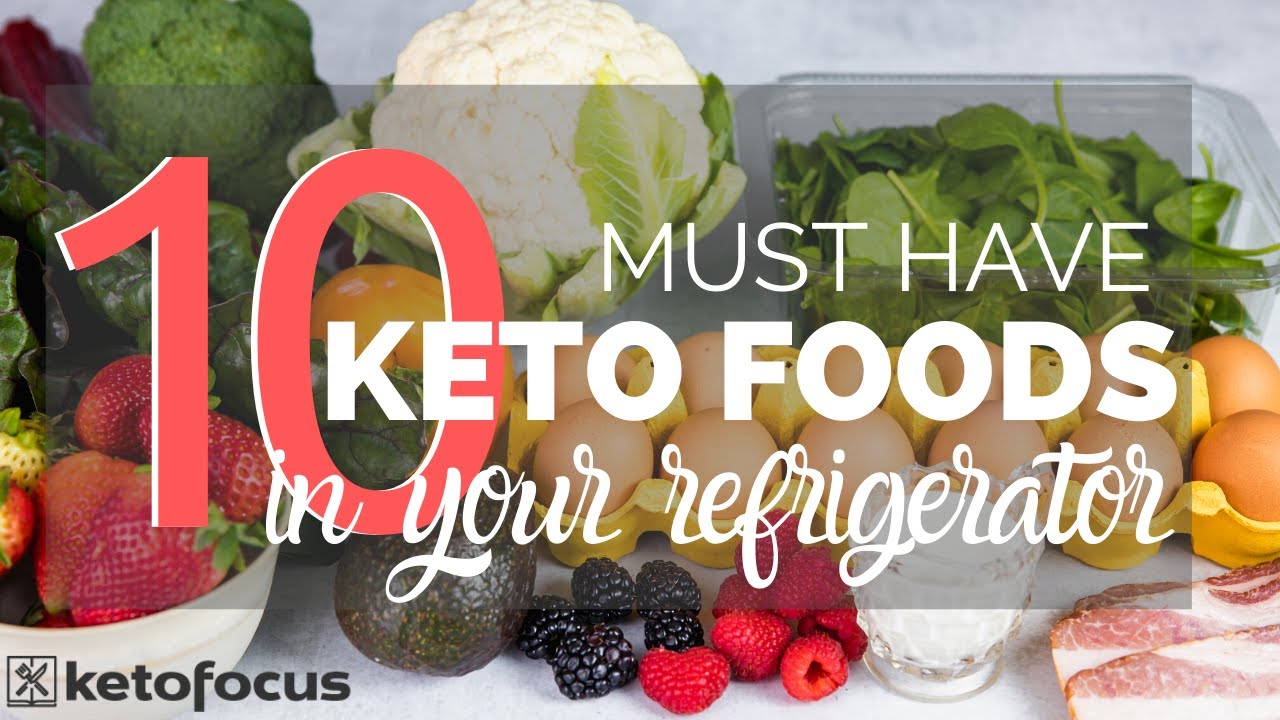Ketogenic Diet: Benefits, Risks, and How to Get Started

Introduction to the Ketogenic Diet
The ketogenic diet, commonly referred to as the keto diet, has gained immense popularity in recent years. This low-carb, high-fat diet promises numerous health benefits, including weight loss, improved mental clarity, and better energy levels. In this comprehensive guide, we will delve deep into the science behind the ketogenic diet, its benefits and risks, and provide detailed information on how to get started and maintain this lifestyle.
What is the Ketogenic Diet?
The ketogenic diet is a dietary regimen that drastically reduces carbohydrate intake and replaces it with fat. This reduction in carbs puts your body into a metabolic state called ketosis, where fat, from your diet and from your body, is burned for energy.
The Science Behind Ketosis
In ketosis, your body becomes incredibly efficient at burning fat for energy. It also turns fat into ketones in the liver, which can supply energy for the brain. Ketosis is a natural process that the body initiates to help us survive when food intake is low. During this state, we produce ketones, which are produced from the breakdown of fats in the liver.
Macronutrient Breakdown
For the ketogenic diet to be effective, you must adhere to a specific macronutrient breakdown:
- Fat: 70-75%
- Protein: 20-25%
- Carbohydrates: 5-10%
Types of Ketogenic Diets
There are several variations of the ketogenic diet, each with different carb restrictions and macronutrient ratios:
- Standard Ketogenic Diet (SKD): This is the most common version and involves a very low-carb, moderate-protein, and high-fat intake.
- Cyclical Ketogenic Diet (CKD): This approach involves periods of higher-carb refeeds, such as 5 ketogenic days followed by 2 high-carb days.
- Targeted Ketogenic Diet (TKD): This version allows you to consume carbs around workouts.
- High-Protein Ketogenic Diet: Similar to a standard ketogenic diet, but with more protein. The ratio is often 60% fat, 35% protein, and 5% carbs.
Benefits of the Ketogenic Diet
Weight Loss
One of the most significant benefits of the ketogenic diet is its ability to promote weight loss. By reducing carbohydrate intake and increasing fat consumption, the body is forced to use fat as its primary energy source. Studies have shown that individuals on a ketogenic diet can lose more weight and maintain it compared to those on a low-fat diet.
How It Works
The ketogenic diet helps you lose weight by:
- Reducing Appetite: Ketones have an appetite-suppressing effect, which can help you eat fewer calories.
- Increasing Fat Burning: When in ketosis, your body becomes efficient at burning fat for fuel.
- Lowering Insulin Levels: Reduced carbohydrate intake lowers insulin levels, which can help your body burn fat more effectively.
Improved Mental Clarity and Focus
Many ketogenic diet followers report enhanced mental clarity and focus. Ketones are a powerful fuel source for the brain, and consuming fewer carbohydrates can help prevent spikes and crashes in blood sugar levels, leading to more stable energy and concentration.
Brain Health Benefits
Ketones provide a steady supply of energy to the brain, which can help improve cognitive function. Some studies suggest that the ketogenic diet may have neuroprotective benefits and could be beneficial for conditions like Alzheimer’s disease and epilepsy.
Increased Energy Levels
By providing a steady supply of energy through fats, the ketogenic diet can help improve overall energy levels. Fat is a more efficient and longer-lasting fuel source compared to carbohydrates, which can lead to sustained energy throughout the day.
Better Blood Sugar Control
The keto diet can be particularly beneficial for individuals with type 2 diabetes or prediabetes. By reducing carbohydrate intake, the diet helps lower blood sugar levels and improve insulin sensitivity.
Managing Diabetes
For those with diabetes, the ketogenic diet can help:
- Reduce Hemoglobin A1c Levels: This is a marker for long-term blood glucose levels.
- Lower Insulin Requirements: Reducing carb intake can decrease the need for insulin.
- Prevent Blood Sugar Spikes: Stabilizing blood sugar levels helps prevent the rapid increases seen after high-carb meals.
Potential Health Benefits
Research suggests that the ketogenic diet may offer several other health benefits, including:
- Reduced Risk of Heart Disease: The diet can improve cholesterol levels by increasing HDL (the “good” cholesterol) and reducing triglycerides.
- Improved Cholesterol Levels: Some studies show a reduction in LDL particle size and number.
- Reduced Inflammation: Lower carbohydrate intake can reduce markers of inflammation.
- Potential Protection Against Certain Cancers: Some research indicates that the ketogenic diet may slow tumor growth and improve outcomes for certain types of cancer.
Risks and Considerations
Keto Flu
When starting the keto diet, some people experience flu-like symptoms known as the “keto flu.” This can include headaches, fatigue, nausea, dizziness, and irritability. These symptoms typically occur as the body adjusts to burning fat for fuel instead of carbohydrates.
How to Alleviate Keto Flu
To reduce the effects of keto flu:
- Stay Hydrated: Drink plenty of water.
- Increase Electrolyte Intake: Consume foods rich in sodium, potassium, and magnesium.
- Gradually Reduce Carbs: Instead of cutting carbs abruptly, gradually decrease your intake to allow your body to adjust.
Nutrient Deficiencies
Due to the restrictive nature of the ketogenic diet, there is a risk of nutrient deficiencies. It is essential to consume a variety of nutrient-dense foods to ensure you are meeting your nutritional needs. This can include leafy greens, nuts, seeds, avocados, and low-carb vegetables.
Ensuring Nutrient Intake
To avoid deficiencies:
- Eat a Variety of Foods: Include a wide range of low-carb vegetables and healthy fats.
- Consider Supplements: Magnesium, potassium, and sodium supplements can help meet your nutritional needs.
- Focus on Whole Foods: Processed foods are often low in essential nutrients.
Increased Cholesterol Levels
While the ketogenic diet can improve cholesterol levels for many people, it may cause an increase in LDL cholesterol (the “bad” cholesterol) for some individuals. Regular monitoring of cholesterol levels is recommended when following the keto diet.
Monitoring Heart Health
To ensure heart health:
- Get Regular Checkups: Have your cholesterol levels checked regularly.
- Choose Healthy Fats: Focus on monounsaturated and polyunsaturated fats rather than saturated fats.
- Stay Active: Regular exercise can help maintain healthy cholesterol levels.
Sustainability
The keto diet can be challenging to maintain long-term due to its restrictive nature. Social situations, dining out, and travel can make adhering to the diet difficult. It is essential to plan and prepare to ensure long-term success.
Tips for Long-Term Success
To make the keto diet sustainable:
- Plan Ahead: Prepare meals in advance.
- Find Keto-Friendly Restaurants: Research menus before dining out.
- Stay Flexible: Allow for occasional carb refeeds if it helps you stay on track.
How to Get Started on the Ketogenic Diet
Step 1: Educate Yourself
Before starting the keto diet, it is crucial to educate yourself about the diet’s principles, benefits, and potential risks. Understanding the science behind ketosis and the macronutrient requirements will help you make informed decisions.
Step 2: Plan Your Meals
Planning your meals is essential for success on the keto diet. Focus on incorporating high-fat, low-carb foods into your diet. Some examples include:
- Meat: Beef, pork, lamb, poultry, and fatty fish
- Dairy: Cheese, butter, cream, and full-fat yogurt
- Nuts and Seeds: Almonds, walnuts, chia seeds, and flaxseeds
- Healthy Fats: Avocados, olive oil, coconut oil, and MCT oil
- Low-Carb Vegetables: Leafy greens, broccoli, cauliflower, and zucchini
Step 3: Calculate Your Macros
Use a macronutrient calculator to determine the appropriate amount of fat, protein, and carbohydrates you should consume daily. This will help you stay within the recommended macronutrient ratios for ketosis.
Step 4: Monitor Your Progress
Regularly monitor your ketone levels using urine strips, blood meters, or breath analyzers to ensure you are in ketosis. Additionally, track your weight, measurements, and how you feel to assess your progress.
Step 5: Stay Hydrated and Supplement Wisely
Staying hydrated is essential on the ketogenic diet, as your body can lose water and electrolytes more rapidly. Consider supplementing with electrolytes, magnesium, and potassium to prevent deficiencies.
Step 6: Adjust and Adapt
As you progress on the ketogenic diet, you may need to adjust your macronutrient intake or food choices to better suit your lifestyle and goals. Regularly reassess your progress and make necessary changes to ensure continued success.
Tips for Maintaining the Ketogenic Diet
Meal Prep
Preparing your meals in advance can help you stay on track with your ketogenic diet. Plan your meals for the week, cook in bulk, and store portions in the refrigerator or freezer for easy access.
Find Keto-Friendly Alternatives
Look for keto-friendly alternatives to your favorite foods. There are many low-carb options available, including cauliflower rice, zucchini noodles, and almond flour-based products.
Stay Active
Incorporate regular physical activity into your routine. Exercise can help improve your overall health and enhance the benefits of the ketogenic diet.
Seek Support
Join online communities, social media groups, or find a keto diet buddy to share your experiences, challenges, and successes. Having a support system can make it easier to stay committed to your goals.
Common Misconceptions About the Ketogenic Diet
Myth: The Ketogenic Diet is High in Protein
While the keto diet includes moderate protein intake, it is primarily a high-fat diet. Consuming too much protein can kick you out of ketosis, as excess protein can be converted into glucose through a process called gluconeogenesis.
Myth: The Ketogenic Diet is a Quick Fix
The keto diet is not a quick fix for weight loss. It requires commitment, consistency, and lifestyle changes to achieve long-term results. Sustainable weight loss and health improvements take time and effort.
Myth: You Can’t Eat Any Carbohydrates
While the keto diet significantly reduces carbohydrate intake, it does not eliminate it entirely. You can still enjoy low-carb vegetables, nuts, seeds, and some dairy products while staying within your daily carb limit.
Myth: The Ketogenic Diet is Unhealthy
Contrary to some beliefs, the keto diet can be healthy when done correctly. By focusing on whole, nutrient-dense foods and healthy fats, you can support overall health and well-being.
Frequently Asked Questions About the Ketogenic Diet
Is the Ketogenic Diet Safe for Everyone?
The ketogenic diet is generally safe for most people. However, it may not be suitable for individuals with certain medical conditions, such as pancreatitis, liver disease, or fat malabsorption issues. It is essential to consult with a healthcare professional before starting the diet.
How Long Does It Take to Enter Ketosis?
The time it takes to enter ketosis varies from person to person. On average, it can take 2-4 days of following the keto diet to enter ketosis. Factors such as individual metabolism, activity level, and adherence to the diet can influence this timeframe.
Can You Build Muscle on the Ketogenic Diet?
Yes, you can build muscle on the keto diet. However, it may require careful planning to ensure you are consuming enough protein and calories to support muscle growth. Some individuals may find that a targeted ketogenic diet (TKD) or cyclical ketogenic diet (CKD) better suits their muscle-building goals.
What is the Difference Between the Ketogenic Diet and Other Low-Carb Diets?
The primary difference between the ketogenic diet and other low-carb diets is the macronutrient composition. The keto diet is high in fat, moderate in protein, and very low in carbohydrates, while other low-carb diets may allow for higher carbohydrate intake and lower fat consumption.
Can the Ketogenic Diet Improve Athletic Performance?
The keto diet can improve athletic performance for some individuals, particularly in endurance sports. By relying on fat as a primary fuel source, athletes can experience sustained energy levels during prolonged activities. However, high-intensity and anaerobic sports may require more carbohydrates for optimal performance.
How Do You Maintain the Ketogenic Diet While Traveling?
Maintaining the ketogenic diet while traveling can be challenging but is possible with careful planning. Pack keto-friendly snacks, research restaurants in advance, and consider staying in accommodations with kitchen facilities to prepare your meals.
What Are the Signs of Being in Ketosis?
Common signs of being in ketosis include:
- Increased Energy Levels: Steady and sustained energy throughout the day.
- Reduced Appetite: Feeling less hungry and reduced cravings.
- Weight Loss: Gradual weight loss as your body burns fat for fuel.
- Ketone Levels: Positive ketone readings from urine, blood, or breath tests.
Conclusion
The keto diet offers numerous health benefits, including weight loss, improved mental clarity, and increased energy levels. By understanding the science behind ketosis and adopting a well-planned approach, you can successfully incorporate the ketogenic diet into your lifestyle. Remember to stay informed, plan your meals, monitor your progress, and seek support when needed. With dedication and consistency, you can experience the transformative benefits of the keto diet and achieve your health and wellness goals.








